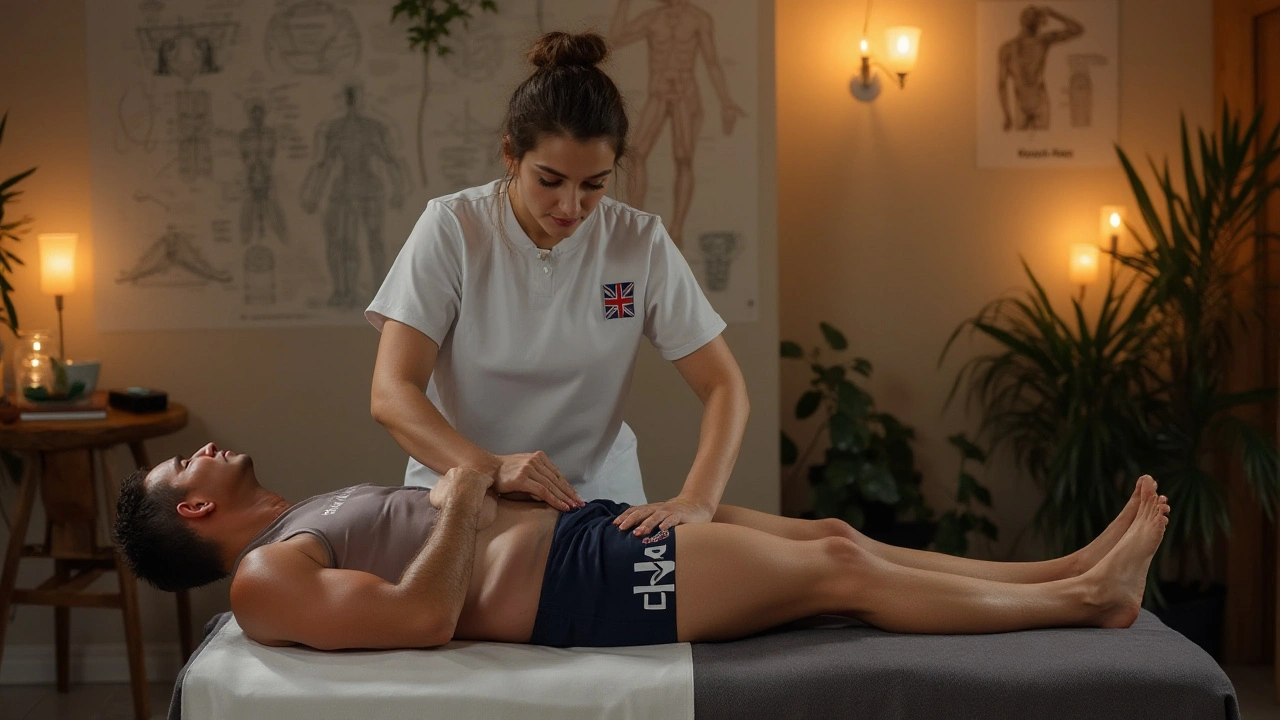Neuromuscular Massage: What You Need to Know
If you’ve ever had stiff muscles or nagging pain that just won’t go away, neuromuscular massage might be the fix you didn’t know about. This type of massage focuses on releasing tight spots called trigger points that cause pain and limit how your muscles move. It’s not just about relaxation—it's about fixing the root of your muscle troubles so you can feel better and move easier.
Think of your muscles like ropes with knots. Neuromuscular therapists use their fingers, thumbs, and sometimes elbows to press and stretch these knots until they loosen up. This pressure helps improve blood flow, calm nerve irritation, and break the cycle of pain. The result? Less stiffness and more comfort in your day-to-day.
How Does Neuromuscular Massage Work?
When a muscle keeps tightening (maybe from stress, injury, or poor posture), small sensitive spots develop called trigger points. These spots can send pain to other areas or make muscles feel weak. The massage therapist locates these spots by feeling for tight bands in your muscle. Then, they apply steady pressure and stretch the muscle to release the tension. It might feel a bit uncomfortable, but it’s usually a good kind of pain with real benefits.
This therapy also pays close attention to how your body moves. A therapist might watch your posture and check how your joints move, aiming to fix bad habits that cause your muscle problems in the first place. That’s why many people find lasting relief—not just a quick fix.
When Should You Try Neuromuscular Massage?
Got chronic neck aches, tight shoulders, lower back pain, or muscle cramps? Neuromuscular massage is a top choice for people dealing with these common issues. It’s also helpful after sports injuries or when muscles tighten up from sitting too much. If you’ve tried regular massages but still feel tight spots lingering, this targeted approach might make all the difference.
Keep in mind, it’s best to see a trained neuromuscular therapist who understands the body well. They’ll tailor the pressure and techniques to your needs and avoid making things worse. And don’t forget to drink plenty of water after your session — flushing out released toxins helps your muscles feel better quicker.
In a nutshell, neuromuscular massage is more than a luxury—it’s a smart option for anyone serious about beating muscle pain and moving freely again. Next time you feel stuck with sore muscles, give it a try and feel how focused touch can change the way your body feels and works.
Delve into the world of neuromuscular massage and uncover how it can significantly impact athletic performance. Discover its benefits for muscle recovery, injury prevention, and overall well-being. Learn how targeted techniques can enhance physical capabilities, reduce fatigue, and promote efficient movement. Unveil the science-backed advantages of incorporating neuromuscular massage into regular training routines.


 Health and Wellness
Health and Wellness